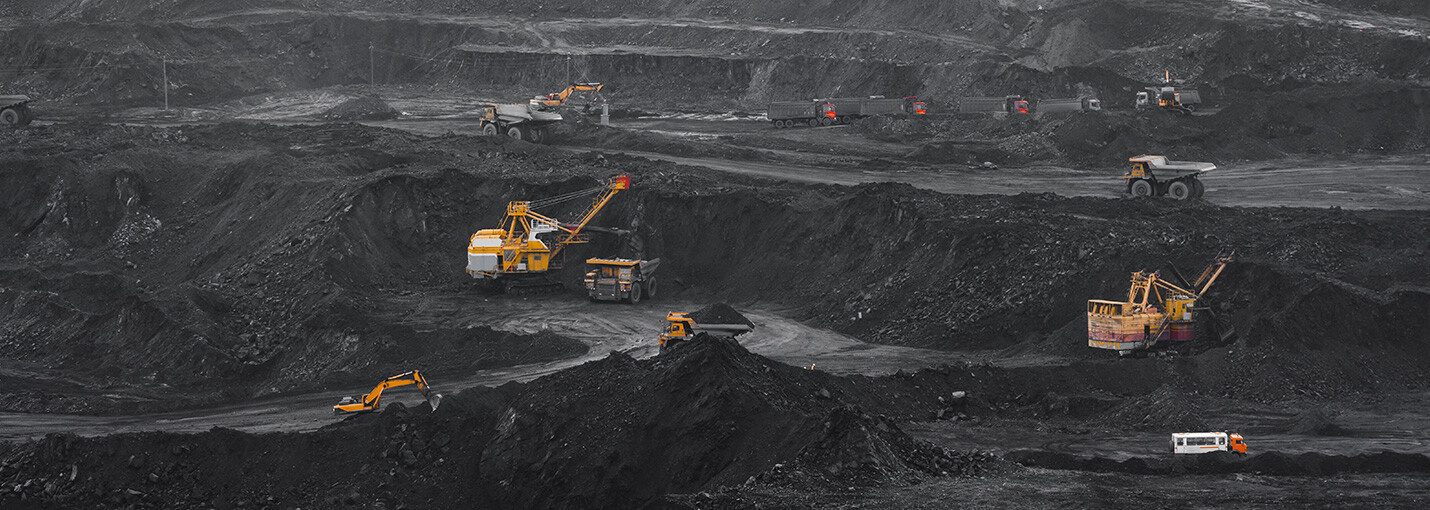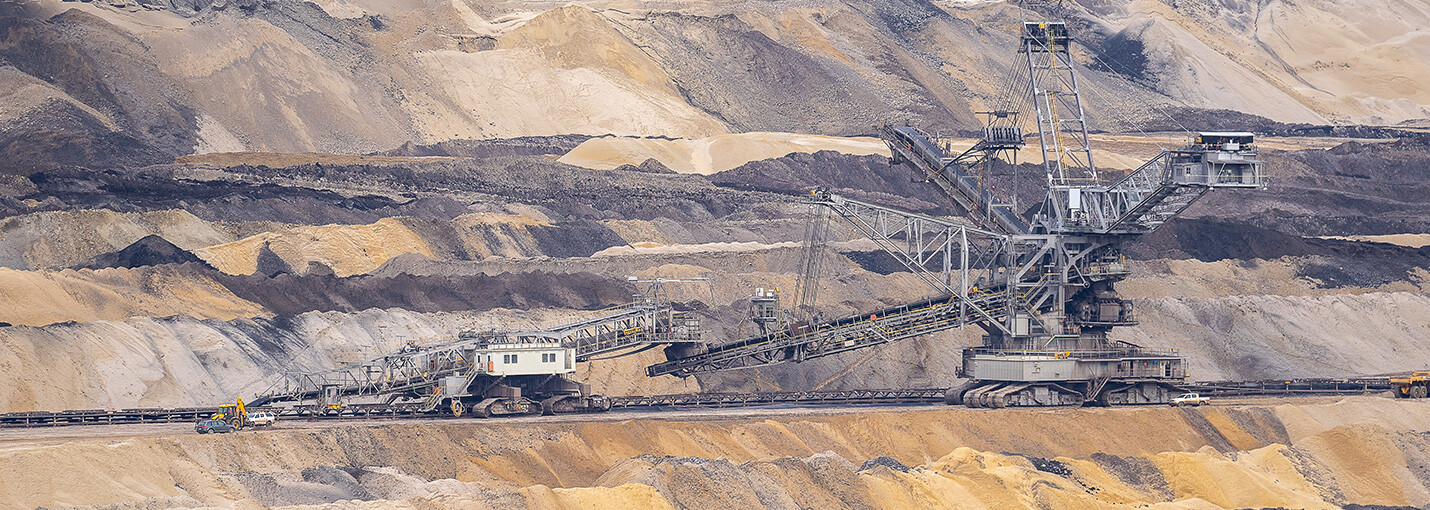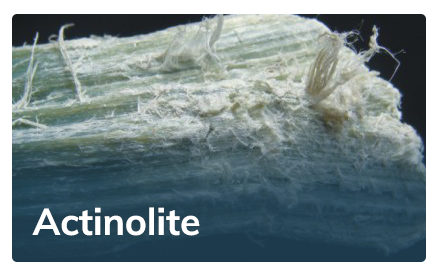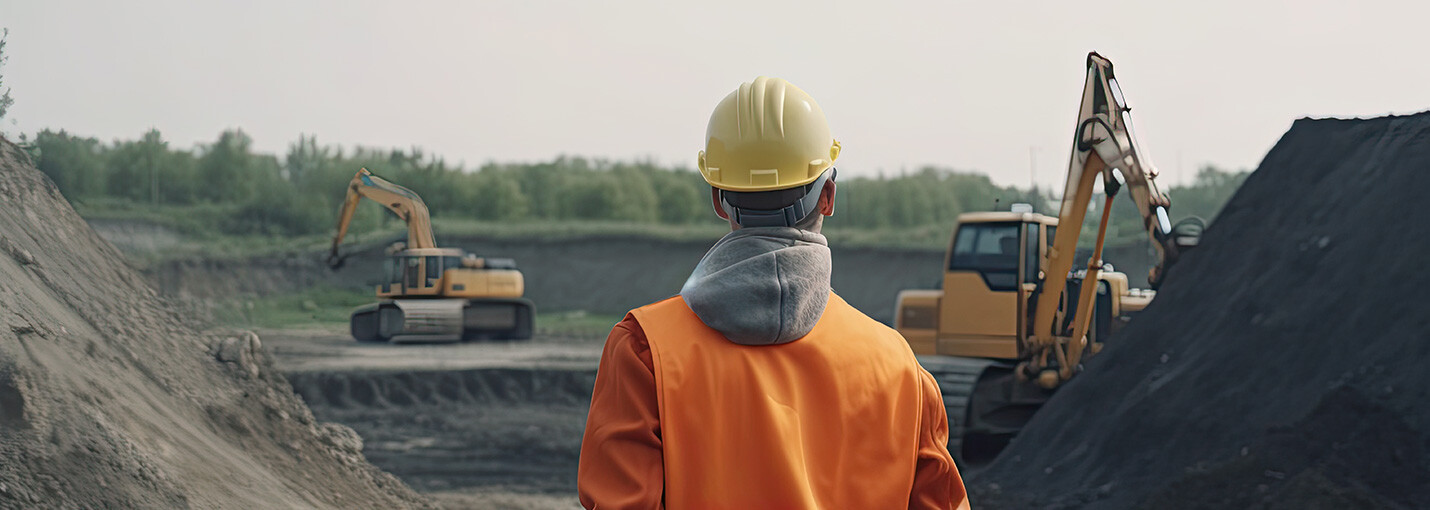Asbestos Exposure in the Mining Industry: Understanding the Risks
Asbestos exposure poses an ongoing concern for people who worked in the mining industry.
Well before asbestos mining began, to ancient people, an ever-burning asbestos ceremonial candle wick was almost like the burning bush. Both were highly prized and almost sacred, at least to some people. Low-level servants usually maintained such items, The property owners cared little about workers’ health and safety. Alas, that pattern persisted for centuries.
!
If you believe that you were exposed to asbestos, even as a child, speak to a healthcare provider about tests and screening to help diagnose lung-scarring and screen for asbestos-related diseases.
Asbestos History
Asbestos mining began on a large scale during the Second Industrial Revolution, around 1900. By then, the adverse health effects of asbestos were well-documented. But instead of reducing the use of this harmful substance, companies doubled down. We mentioned asbestos wicks above. Many cigarette lighters made before 1980, especially Zippo lighters, had asbestos wicks.
There were thousands of asbestos products and materials used in the 20th century.
(Unfortunately, many are still around today.)
Small consumer products were just the start. Also around 1900, explorers found large chrysotile (white) asbestos deposits in remote parts of Canada. These mines, and others like them, became the principal source of most asbestos products and materials used worldwide throughout the twentieth century. To keep up with demand, these mines, which are still legal in many parts of the world, still produce over one million metric tons of asbestos every year.
The asbestos industry kept workers and consumers in the dark about the risks they were facing.
Mining companies and other companies had chance after chance to do the right thing, stop using asbestos, and compensate victims. They passed on each chance. So, an asbestos exposure lawyer must now force them to do these things, which they should have done a long time ago. Due to the serious nature of asbestos exposure injuries, and the long-term asbestos health hazard cover-up, significant compensation is usually available.
“The overall evidence suggests there is no safe level of asbestos exposure.”Source: National Cancer Institute (NIH)1 |
Asbestos Mining: A Primer
The aforementioned one million metric ton figure is a drop in the bucket compared to the mining volume before 1990. Before then, mines in North America and elsewhere supplied millions of tons of asbestos every year.
These mines employed countless people and brought in billions of dollars. In fact, asbestos is California’s state rock. Companies then used this toxic mineral in a wide variety of products and materials.
Products and uses of asbestos included:
| Home Insulation: Asbestos doesn’t conduct heat. This property makes it an excellent insulation material. Fiberglass is almost as effective, but it’s’ more expensive than asbestos. So, guess which material most builders preferred. |
| Shipbuilding: For this same reason, until 1980, government and private shipbuilders stuffed everything that floats full of asbestos. The infamous 1967 USS Forrestal fire, which killed almost 200 airmen and sailors, accelerated this process, especially in hot and dangerous areas, like boiler rooms and ammunition storage areas. |
| Commercial Wiring: Asbestos doesn’t conduct electricity. Chrysotile asbestos, a substance that resembles several layers of white tissue paper on top of each other, was and is a particularly popular electric wiring insulator. |
| Home Construction: Fiber-reinforced concrete was invented in 1970. Before then, builders reinforced concrete in driveways, walkways, and foundations with asbestos fibers. In addition to concrete, wiring, and insulation, asbestos showed up in other areas as well, such as decorative ceilings, drywall, and floor tiles. |
Asbestos miners, many of whom worked with little personal protective equipment, weren’t the only workers at risk of asbestos exposure..
Asbestos miners were unmistakably at risk of asbestos-related diseases like lung cancer and mesothelioma. In addition, large-scale mining also created cross-contamination issues, mostly in talc and vermiculite mines.

Overall, asbestos dangers in the mining industry extend to the mining of any other material, because minerals don’t always form separately. Instead, they form in a kind of soup as lava cools slowly, creating a crystallized matrix of various minerals mixed together, which includes asbestos mineral types.
Even mining industry workers involved in mining minerals other than asbestos may be at risk because of contamination.
As a result of cross-contamination, mining industry workers involved in mining minerals other than asbestos may be at risk because of contamination. A study of diamond mine workers in South Africa found they had tremolite asbestos in their lungs from contamination.
“Some asbestos fibers may bypass…your body’s natural defenses…and lodge deep within your lungs. Those fibers can remain in place for a very long time and may never be removed.”Source: American Lung Association |
Talc and asbestos contamination
Back to the Big Two. Chemically, asbestos and talc are nearly identical, mostly because they’re usually close together underground. Therefore, asbestos mines usually contain stray talc products, and vice versa. A handful of talc particles in a sheet of home or commercial insulation usually isn’t a problem. A few stray asbestos particles in talcum powder is a big problem.

We mentioned fiberglass as an alternative to asbestos above. Vermiculite is another option. Like asbestos and talc, cross-contamination between vermiculite and asbestos is a significant risk. Unfortunately for victims, mining companies have very poor safety records.
Vermiculite and asbestos contamination
The Grace Mine in Libby, Montana is a good example. GRace Company officials knew for decades that the vermiculite they extracted was laced with asbestos. Yet the company did nothing to warn its customers or protect the health and safety of its workers and their families.
“All forms of asbestos are carcinogenic to humans.” 2
The Asbestos Mining Cover-Up
The Libby cover-up wasn’t an isolated incident. Asbestos mining and other companies around the world worked together to bury (no mining pun intended) the adverse health effects of asbestos. This statement isn’t some crazy conspiracy theory. This statement is fact.
In 1934, the heads of large asbestos mining and other companies met in England to discuss a growing problem, namely that asbestos was killing their workers. The suits hatched a three-prong plan:
Chip away at the emerging science that identified health risks,
Loudly trumpet asbestos success stories, and
Quitely transfer sick workers to other positions.
Big tobacco and other large, dangerous industries have copied this plan, or at least parts of it, for many years. The plan didn’t work out for them, and ultimately, it didn’t work out for asbestos companies either.
Asbestos has no taste or smell.
You may not know you’re breathing it.

Asbestos industry: denying the science, muddying the waters, letting people get sick
For many years, the chip-away approach worked well. Asbestos “experts” successfully discredited adverse health reports. Eventually, however, the science simply became too great to ignore.
Smokers exposed to asbestos are up to 50 times more likely to develop lung cancer than nonsmokers who aren’t exposed.3 |
Asbestos damage became a problem the industry couldn’t ignore (thanks to the victims hiring asbestos attorneys.)
The loudly-trumpet idea worked for a while as well. But they went overboard and played up every success story as a milestone event. As many protest groups have learned, if you scream loud enough and long enough, people stop listening.

Transferring sick workers is usually a good idea, if bosses know they’re sick. But the asbestos illnesses mentioned below often have more than a fifty-year latency period. You cannot quietly transfer employees who haven’t worked there for decades.
Despite these shortcomings, the cover-up remained in place until 1966, when the first asbestos exposure victim filed an injury lawsuit. The dominoes kept falling, and by 1990, asbestos mining was illegal in the United States and many other countries.
| Chrysotile | Crocidolite | Amosite | Anthophyllite | Actinolite | Tremolite |
 |  |  |  |  |  |

Asbestos Risks and the mining industry
Asbestos fibers in the open air are incredibly toxic. Asbestos fibers in confined spaces, like mines, are much more dangerous, especially if miners don’t wear adequate protective equipment.
Mining dust, regardless of the substance mined, often causes silicosis and black lung disease. Tiny dust particles clog tiny breathing passageways. As a result, these victims often suffer from chronic breathing problems.
“Some asbestos fibers may bypass…your body’s natural defenses…and lodge deep within your lungs. Those fibers can remain in place for a very long time and may never be removed.”Source: American Lung Association |
Asbestosis is another health risk for miners (in addition to black lung and silicosis).
Black lung disease and silicosis are bad. Asbestosis is much worse. Asbestos fibers don’t just clog tiny airways, many of which are no larger than the point of a pencil. Asbestos fibers burn these airways and create scar tissue. These scars permanently block these airways. As scar tissue builds up, victims eventually have trouble breathing even while they’re at rest.
“Generally, those who develop asbestos-related diseases show no signs of illness for a long time after exposure.”Source: National Cancer Institute (NIH)4 |
The big issue with asbestosis is that “eventually” is usually a very long time. As mentioned, asbestos exposure illnesses usually have very long latency periods. So, by the time asbestos exposure victims know they have asbestosis, a radical and risky lung transplant may be the only available treatment option.
Do You Qualify For Compensation?
Quickly and easily find out how you were exposed by searching W.A.R.D., the largest asbestos database on the planet.
FREE SEARCH >Legal Options for Asbestos Exposure
If you have been injured by asbestos exposure in the mining industry (or through second-hand exposure), there is compensation available.
Once upon a time, asbestos miners, and people who lived near asbestos mines, had limited legal options. Today, several alternatives may be available, depending on the facts and circumstances of a particular case.
Injured miners are usually eligible for workers’ compensation benefits. These benefits, which usually include lost wage replacement and medical bill payment, are available if the victim has a work-related trauma injury or occupational disease, like one of the aforementioned breathing conditions.
“It has been repeatedly and consistently demonstrated in the medical and scientific literature that family members exposed to asbestos dust from laundering a worker’s clothing have a significantly increased risk of developing mesothelioma.”-U.S. Supreme Court, 2018. Air and Liquid Systems Corp. v. DeVries, 139 S. Ct. 986, 586 U.S., 203 L. Ed. 2d 373 (2019). |
Proving asbestos exposure and asbestos-related diseases can be complicated.
But an asbestos attorney like AsbestosClaims.Law can help.
These victims don’t have to prove negligence or fault. But they must prove that their asbestos exposure injury was ambient (work-related) as opposed to non-ambient (environmental).
Over $30 Billion is still available (No lawsuit. No fees unless you receive money. No risk.) Stake your claim.  |
Additional compensation is available if an asbestos exposure lawyer successfully sues the mine’s owner for damages. These victims must prove negligence, or a lack of care. Failure to provide proper equipment, as discussed above, is just one way a mining company might be negligent.
This additional compensation often includes money for noneconomic losses, such as pain and suffering. Moreover, because of the long-term asbestos cover-up, punitive damages may be available as well.
Once the jig was up, many companies, like Johns Manville and Turner Newall, established large victim compensation funds. These claims are rather straightforward, but limited discovery, as well as limited compensation, is usually available.
AsbestosClaims.Law
Asbestos claims aren’t just a day in the office for Justinian C. Lane.
They’re a mission.
In the past, workers exposed to asbestos were kept in the dark about the dangers of asbestos exposure. Among those workers were Justinian’s grandparents and his own father.
Unfortunately, they were also kept in the dark about the compensation options available to them, such as asbestos lawsuits and trust funds. In their later years, they died from asbestos-related cancers.
Because no one in Justinian’s family knew their options, they never received any compensation for the death of their loved ones.
Today, we’re working to turn the tide.
Significant compensation may be available to you if you have contracted an asbestos-related illness or injury. This includes workers as well as family members who have been exposed.
Compensation is your key to receiving the medical treatment you need, funding asbestos removal services, and maintaining your physical well-being.
Want to know one of the quickest and easiest ways to receive compensation? Let us talk to you about asbestos trust claims. This option can often avoid lawsuits altogether.
We want to hear your story, and more importantly, we want to bring redemption to it.
Need help filing a claim? No problem, you can email us at [email protected].
Would you rather talk over the phone? Simply call or text us, at (206) 455-9190.
You won’t pay a penny to us unless you receive money first, so there’s no risk.
In addition to legal claims, veterans disability, social security and employment protection like workers compensation, FELA and The Jones Act for maritime workers, there are asbestos trusts that have been set up to compensate those harmed by asbestos without having to file a lawsuit.
The dangers of asbestos used to be an industry-guarded secret kept from suffering people like Justinian’s family. Not anymore. We’re bringing you the truth.
We’ve created numerous resources to help answer your questions and empower you with the information you need to know and act on.
Our website has a wealth of information dedicated to things like health and safety, asbestos testing, asbestos removal, and legal information about compensation for asbestos injuries.
Are you a visual learner? No problem!
Our YouTube page has infographics, an asbestos history series, and other helpful resources for you to check out!
| Not sure where or when you were exposed to asbestos? Let W.A.R.D. help you! The Worldwide Asbestos Research Database (W.A.R.D) is the largest asbestos information database, period. If you need answers related to specific locations, products, or what type of compensation may be available to you due to asbestos exposure, W.A.R.D. is the place to start. |
Working with us is risk-free. Unless you receive compensation money, there are NO FEES! Speak to us about asbestos litigation today.
1 National Cancer Institute (NIH), Asbestos Fact Sheet.
2 IARC Working Group on the Evaluation of Carcinogenic Risks to Humans. Arsenic, metals, fibres, and dusts. IARC Monographs on the Evaluation of Carcinogenic Risks to Humans. 2012 ;100(Pt C):11-465. PMID: 23189751.
3 Klebe, S., Leigh, J., Henderson, D.W. and Nurminen, M., 2020. Asbestos, smoking and lung cancer: an update. International journal of environmental research and public health, 17(1), p.258.
4 National Cancer Institute (NIH), Asbestos Fact Sheet.